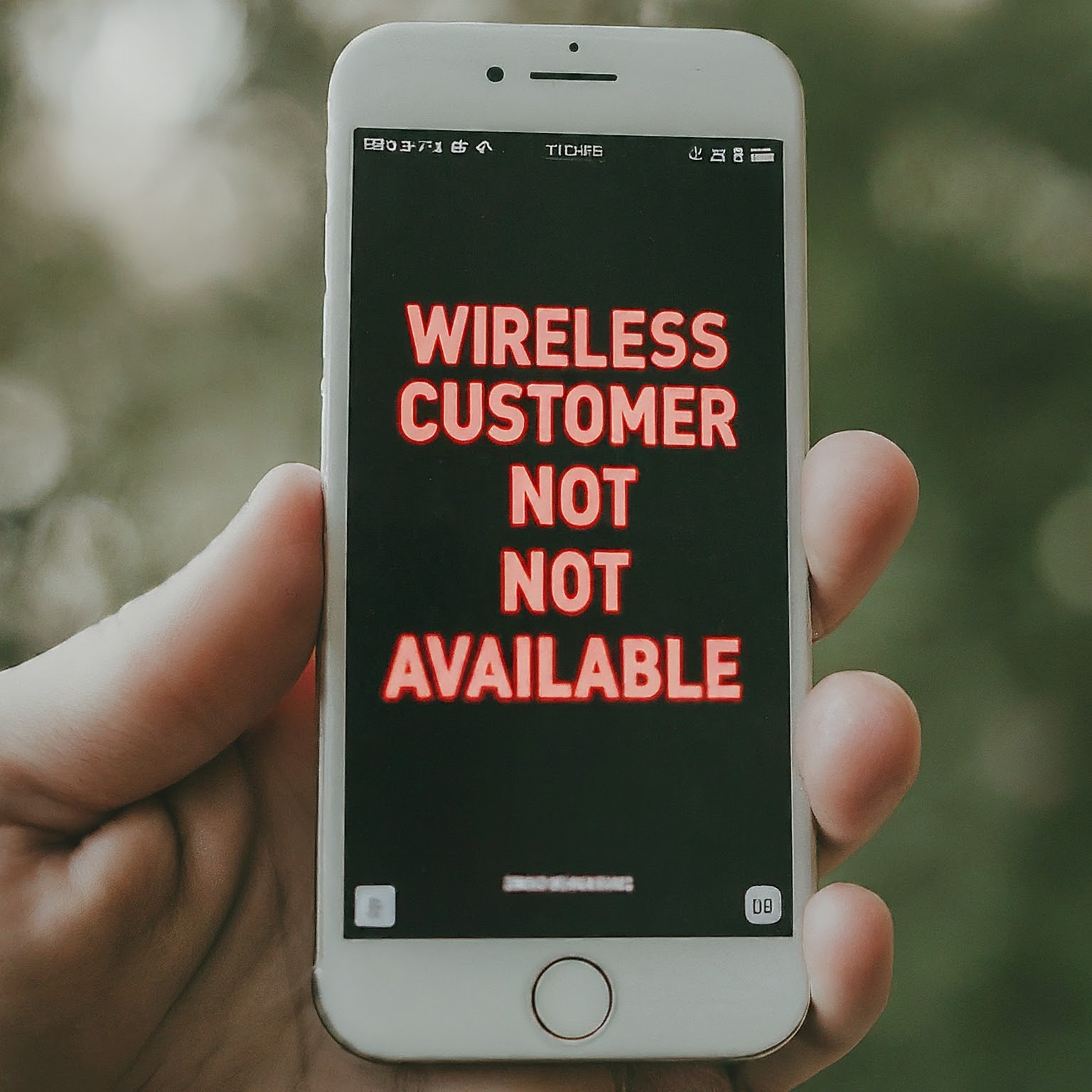In the age of instant communication, the phrase “the wireless customer is not available” can be a frustrating roadblock. We’ve all experienced it: you dial a number, only to be met with an automated message indicating the person you’re trying to reach is currently unavailable. This common occurrence can stem from various reasons, ranging from network issues to personal choices. In this exclusive article, we will explore the multifaceted world of unreachable wireless connections, shedding light on the potential causes, their implications, and strategies to overcome this communication hurdle.

Understanding the Message: “The Wireless Customer is Not Available”
The automated message “the wireless customer is not available” is a generic response from cellular networks when a call cannot be connected to the intended recipient. This message can be triggered by various factors, and it’s essential to understand these possibilities to navigate the situation effectively.
Potential Causes of an Unavailable Wireless Customer
- Network Issues:
- Poor Signal Strength: If the recipient’s phone has weak or no signal, the call will likely fail to connect, resulting in the “the wireless customer is not available” message. This can happen in areas with limited network coverage, such as remote locations or buildings with thick walls.
- Network Congestion: During peak usage times or in densely populated areas, the cellular network may become overloaded, leading to dropped calls or failed connections.
- Technical Glitches: Temporary technical issues within the network infrastructure can also cause disruptions in connectivity, resulting in the inability to reach the intended recipient.
- Device-Related Issues:
- Phone Turned Off: If the recipient’s phone is switched off, it won’t be able to receive incoming calls, triggering the automated message.
- Airplane Mode: If the recipient has enabled airplane mode on their phone, all wireless connections, including cellular signals, will be disabled.
- Battery Depletion: A dead battery will render the phone unable to receive calls, resulting in the unavailable message.
- Do Not Disturb Mode: If the recipient has activated Do Not Disturb mode, calls may be silenced or sent directly to voicemail, depending on their settings.
- User-Initiated Actions:
- Call Blocking: The recipient may have intentionally blocked your number, preventing your calls from reaching them.
- Call Forwarding: The recipient may have set up call forwarding to another number or voicemail, causing your calls to be redirected.
- Network Restrictions: Some cellular plans may have restrictions on incoming or outgoing calls, especially for international calls or premium numbers.
Implications of an Unavailable Wireless Customer
The inability to reach someone via their cell phone can have various implications, depending on the context and urgency of the situation:
- Communication Breakdown: In personal settings, an unreachable connection can lead to miscommunication, missed opportunities, and frustration, especially if the matter is time-sensitive or urgent.
- Business Disruptions: In professional settings, the inability to connect with clients, colleagues, or partners can disrupt workflows, delay projects, and impact productivity.
- Safety Concerns: In emergency situations, an unavailable wireless customer can hinder access to help, potentially jeopardizing safety and well-being.
Strategies to Overcome Unreachable Connections
While encountering the “the wireless customer is not available” message can be frustrating, there are several strategies you can employ to overcome this communication hurdle:
- Try Again Later: Network issues or temporary device-related problems may resolve on their own. Wait a few minutes and try calling again.
- Leave a Voicemail: If the recipient’s voicemail is active, leave a detailed message explaining the purpose of your call and your contact information.
- Send a Text Message: If the recipient’s phone is on but unable to receive calls, try sending a text message. This may prompt them to check their phone or respond when they are available.
- Reach Out Through Other Channels: If the matter is urgent, consider reaching out through alternative communication channels, such as email, social media, or messaging apps.
- Check Online Resources: If you suspect a network outage, check your carrier’s website or social media pages for any announcements or updates.
- Contact Customer Support: If you’re unable to reach the recipient through any means and the matter is urgent, consider contacting your carrier’s customer support for assistance.
Preventive Measures: Ensuring Reachability
While you cannot control all the factors that may lead to an unavailable wireless connection, you can take certain preventive measures to ensure your own reachability:
- Maintain Sufficient Battery Life: Keep your phone charged to avoid missing important calls due to a dead battery.
- Monitor Network Coverage: Be mindful of your location and network coverage. If you’re in an area with weak signal, try moving to a location with better reception.
- Manage Call Settings: Review your call settings and ensure that call forwarding, call blocking, and Do Not Disturb mode are configured according to your preferences.
- Update Your Contact Information: Regularly update your contact information with your carrier and important contacts to ensure they can reach you through alternative means if necessary.
The Future of Connectivity: Addressing the Challenges
As technology continues to advance, we can expect improvements in network reliability and coverage, reducing the frequency of cell outages and unreachable connections. The rollout of 5G networks promises faster speeds, lower latency, and increased capacity, further enhancing the overall connectivity experience.
However, challenges remain. The increasing complexity of cellular networks, the growing number of connected devices, and the evolving nature of cyber threats require ongoing efforts to maintain and improve network resilience. Service providers must continue to invest in infrastructure, technology, and security to ensure that their customers remain connected, even in the face of unforeseen challenges.
Conclusion
The phrase “the wireless customer is not available” is a familiar one in today’s connected world. While it can be a source of frustration and inconvenience, understanding the potential causes and adopting proactive strategies can help you navigate these situations effectively. By utilizing alternative communication methods, preparing for the unexpected, and staying informed about network conditions, you can minimize the impact of unreachable connections and maintain seamless communication.
لا تعليق